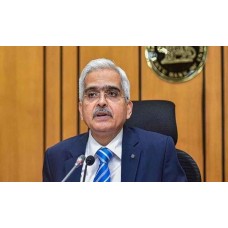RBI initiates to ease financial stress
Recently Governor RBI issues a Statement - Seventh Bi-monthly Monetary Policy Statement, 2019-20 and initiated to ease of financial stress because of the ongoing scenario.
In view of the COVID-19 pandemic, the Monetary Policy Committee (MPC) decided to advance its meeting scheduled for 31st March, 1st and 3rd April 2020. It met on 24th, 26th and 27th March and undertook a careful evaluation of the current and evolving macroeconomic and financial conditions, and the outlook.
I wish to take this opportunity to express my deep gratitude to the MPC members for their swift response to the unprecedented situation and for their valuable contribution to the monetary policy decision taken today. I also wish to thank our teams in the RBI for their continued high-quality support to the MPC’s work through their hard work, research and logistics.
After extensive discussions, the MPC voted unanimously for a sizeable reduction in the policy repo rate and for maintaining the accommodative stance of monetary policy as long as necessary to revive growth, mitigate the impact of COVID-19, while ensuring that inflation remains within the target. While there were some differences in the quantum of reduction, the MPC voted with a 4-2 majority to reduce the policy rate by 75 basis points to 4.4 per cent.
Simultaneously, the fixed rate reverse repo rate, which sets the floor of the liquidity adjustment facility (LAF) corridor, was reduced by 90 basis points to 4.0 per cent, thus creating an asymmetrical corridor. The purpose of this measure relating to reverse repo rate is to make it relatively unattractive for banks to passively deposit funds with the Reserve Bank and instead, to use these funds for on-lending to productive sectors of the economy.
It may be recalled that during the month of March so far, banks have been parking close to Rs 3 lakh crore on a daily average basis under the reverse repo, even as the growth of bank credit has been steadily slowing down. This decision and its advancement have been warranted by the destructive force of the corona virus. It is intended to (a) mitigate the negative effects of the virus; (b) revive growth; and above all, (c) preserve financial stability.
We are living through an extraordinary and unprecedented situation. Everything hinges on the depth of the COVID-19 outbreak, its spread and its duration. Clearly, a war effort has to be mounted and is being mounted to combat the virus, involving both conventional and unconventional measures in continuous battle-ready mode.
Life in the time of COVID-19 has been one of unprecedented loss and isolation. Yet, it is worthwhile to remember that tough times never last; only tough people and tough institutions do.
In the recent period, the Reserve Bank has been in action on a daily basis with efforts to alleviate financial stress, build confidence and keep the financial system sound and functioning. Measures taken by the Reserve Bank are given, 1: a cumulative reduction in the policy repo rate of 135 basis points.
2: Accommodative stance of monetary policy as long as necessary to revive growth, while keeping inflation within the target. 3: two USD buy/sell swap auction of USD 5 billion each conducted on March 26 and April 23, 2019, injecting liquidity into the banking system amounting to Rs 34,561 crore and Rs 34,874 crore, respectively.
4: seven open market purchases, injecting Rs 92,500 crore into the system. 5: four simultaneous purchase and sale of government securities under Open Market Operations (special OMOs or what is known as operation twist) during December and January (December 23 and 30, 2019 and January 6 and 23, 2020) to ensure better monetary policy transmission.
6: five long term repo operations (LTROs) between February 17 and March 18, 2020 for one-year and three-year tenors amounting to Rs 1,25,000 crore of durable liquidity at reasonable cost (fixed repo rate). 7: exemption on incremental credit disbursed by banks between January 31 - July 31, 2020 on retail loans for automobiles, residential housing and loans to micro, small and medium enterprises (MSMEs) from the maintenance of cash reserve ratio (CRR).
8: two 6-month US Dollar sell/buy swap auction providing dollar liquidity amounting to USD 2.71 billion.
9: fine-tuning variable rate repo auctions of Rs 50,000 crore and Rs 25,000 crore of 8 days and 3 days maturity on March 26 and March 31, respectively, with standalone primary dealers (SPDs) allowed to participate.
10: fine-tuning variable rate Repo auctions of 16-day maturity amounting to Rs 77,745 crore on March 23-24, 2020. 11: The amount under the Standing Liquidity Facility (SLF) available for standalone primary dealers was enhanced from Rs 2,800 crore to Rs 10,000 crore on March 24, 2020 and this will be available till April 17, 2020.
Let me assure all that the Reserve Bank is at work and in mission mode, monitoring the evolving financial market and macro-economic conditions; and calibrating its operations to meet any need for additional liquidity support as well as other measures, as may be warranted.
Turning to growth in India, the implied real GDP growth of 4.7 per cent for Q4 2019-20 in the second advance estimates of the National Statistics Office, released in February 2020, within the annual estimate of 5 per cent for the year as a whole is now at risk from the pandemic’s impact on the economy.
Accordingly, it is appropriate that the MPC’s decision and the Reserve Bank’s actions be regarded as a comprehensive package with force multipliers. The developmental and regulatory policies can be broadly delineated under four categories: (1) measures to expand liquidity in the system sizeably to ensure that financial markets and institutions are able to function normally in the face of COVID-19 related dislocations.
(2) steps to reinforce monetary transmission so that bank credit flows on easier terms are sustained to all those who have been affected by the pandemic; (3) efforts to ease financial stress caused by COVID-19 disruptions by relaxing repayment pressures and improving access to working capital; and (4) endeavor to improve the functioning of markets in view of the high volatility experienced with the onset and spread of the pandemic.




